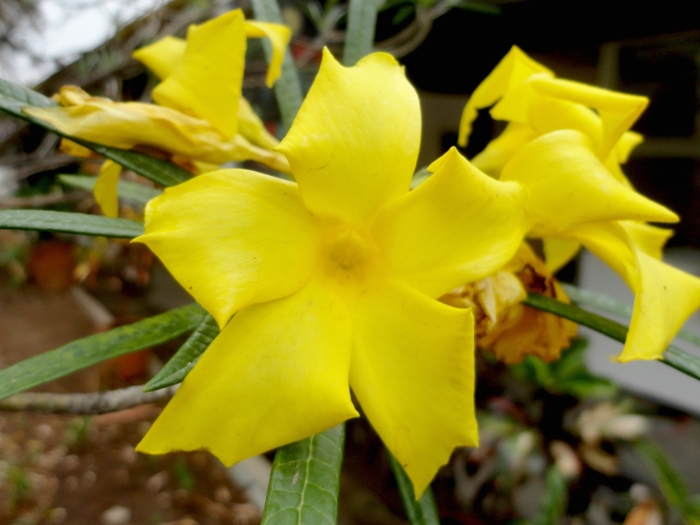Yellow Oleander
(Cascabela thevetioides)
Yellow Oleander (Cascabela thevetioides)
/
/

© Juan Carlos Fonseca Mata
CC BY 4.0
Image By:
© Juan Carlos Fonseca Mata
Recorded By:
Copyright:
CC BY 4.0
Copyright Notice:
Photo by: © Juan Carlos Fonseca Mata | License Type: CC BY 4.0 | License URL: http://creativecommons.org/licenses/by/4.0/ | Uploader: fonsecamata | Publisher: iNaturalist |





















Estimated Native Range
Summary
Cascabela thevetioides, commonly known as Yellow Oleander, is an evergreen shrub or small tree native to the dry regions of Central America and Mexico. It typically grows to a height of 8-15 feet (2.4-4.6 meters) and a similar width, featuring a rounded to irregular crown. The plant is notable for its glossy, lance-shaped leaves and its tubular, yellow to peach-colored flowers that bloom in summer and fall, providing a long-lasting and showy display. The fruit is a paired samara, but it is not particularly ornamental. Yellow Oleander is appreciated for its drought tolerance and its vibrant, fragrant flowers which can enhance sensory gardens.
In cultivation, Yellow Oleander is used for ornamental purposes in tropical and subtropical landscapes, often as a hedge, screen, or accent plant. It thrives in full sun to part shade and requires low to medium amounts of water once established, making it suitable for xeriscaping. It prefers well-drained soils and can tolerate a range of soil types, from sandy to loamy. Gardeners should be aware that all parts of the plant are highly toxic if ingested, and it can be invasive in suitable climates. Care should be taken to plant it away from areas frequented by children and pets.CC BY-SA 4.0
In cultivation, Yellow Oleander is used for ornamental purposes in tropical and subtropical landscapes, often as a hedge, screen, or accent plant. It thrives in full sun to part shade and requires low to medium amounts of water once established, making it suitable for xeriscaping. It prefers well-drained soils and can tolerate a range of soil types, from sandy to loamy. Gardeners should be aware that all parts of the plant are highly toxic if ingested, and it can be invasive in suitable climates. Care should be taken to plant it away from areas frequented by children and pets.CC BY-SA 4.0
Plant Description
- Plant Type: Shrub, Tree
- Height: 8-15 feet
- Width: 3-4 feet
- Growth Rate: Moderate
- Flower Color: Yellow
- Flowering Season: Summer, Fall
- Leaf Retention: Evergreen
Growth Requirements
- Sun: Full Sun, Part Shade
- Water: Low, Medium
- Drainage: Fast
Common Uses
Fragrant, Showy Flowers
Natural Habitat
native to the dry regions of Central America and Mexico
Other Names
Common Names: Thevetia
Scientific Names: , Thevetia thevetioides, Cascabela thevetioides, Thevetia yccotli, Thevetia yccotli var. glabra, Cerbera thevetioides, Thevetia humboldtii,
GBIF Accepted Name: Cascabela thevetioides (Kunth) Lippold